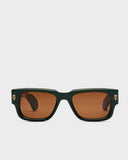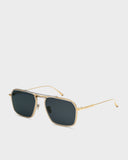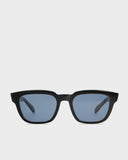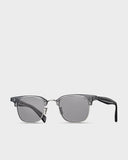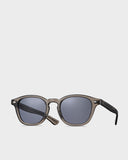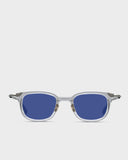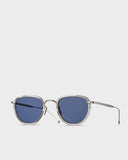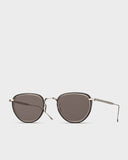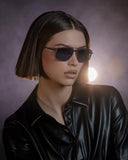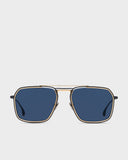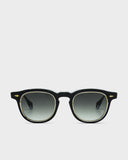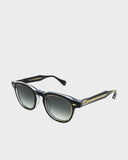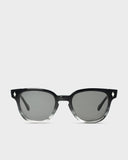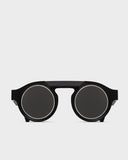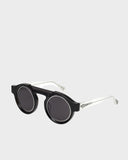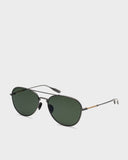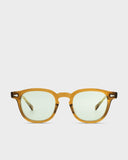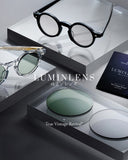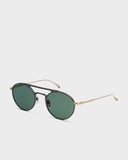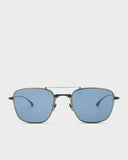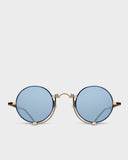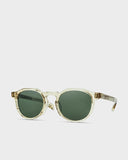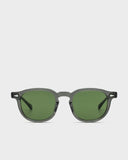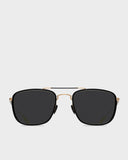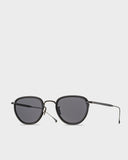Men's Eyewear at Sun of Japan
Men’s eyewear has evolved significantly over time, transforming from a purely functional tool into an essential fashion accessory that reflects individual style and personality. At Sun of Japan, we are dedicated to curating a wide-ranging collection of high-quality eyewear that embodies both traditional craftsmanship and contemporary design. Our diverse selection includes frames that cater to various preferences, ensuring that every customer can find a pair that enhances their features and aligns with their unique aesthetic.
The evolution of Japanese eyewear is deeply rooted in the country's cultural and industrial history. During the Edo Period (1603-1868), Western-style glasses were first introduced to Japan through Dutch traders. These early designs marked the beginning of Japan’s journey into eyewear craftsmanship. By the Meiji Period (1868-1912), Japan had rapidly industrialized, modernizing its manufacturing capabilities and giving rise to more refined eyewear production methods. This period saw the emergence of prominent eyewear manufacturers, including Masunaga Optical, which was founded in 1905 and remains one of Japan’s most esteemed eyewear makers to this day.
Throughout the 20th century, Japanese eyewear evolved into a fashionable accessory, influenced by pop culture and iconic figures such as Buddy Holly. With a rich blend of tradition and innovation, Japanese eyewear manufacturers have maintained a reputation for exceptional craftsmanship, blending heritage techniques with modern designs that appeal to both domestic and global markets.
Styles and Materials for Every Taste
The world of men’s eyewear offers a broad spectrum of designs that cater to diverse preferences, lifestyles, and face shapes. Among the most iconic styles is the timeless Wayfarer, known for its versatile trapezoidal frame that suits a wide range of facial structures. Aviators, characterized by their teardrop-shaped lenses and thin metal frames, convey a sense of classic masculinity and confidence. For those who prefer a more intellectual or creative aesthetic, round frames provide a bold statement that draws attention to the wearer’s features. Square frames, on the other hand, deliver a contemporary look that complements round or oval faces with sharp angles that add structure.
For those seeking a distinctive and sophisticated touch, browline glasses offer a classic yet striking appearance, defined by their thick upper rims that mimic the look of prominent eyebrows. Rectangular frames blend modern and traditional aesthetics, creating a versatile option ideal for various occasions. Meanwhile, rimless designs embrace minimalism, offering lightweight comfort and a clean, understated look that emphasizes the wearer’s natural features.
In addition to offering diverse frame styles, Sun of Japan is committed to providing eyewear made from premium materials that ensure durability, comfort, and longevity. Acetate, a popular choice for contemporary eyewear, is celebrated for its lightweight, flexible, and hypoallergenic properties, making it ideal for all-day comfort. Metal frames, crafted from materials like stainless steel and titanium, deliver sleek aesthetics with enhanced durability and resistance to corrosion. Cellulose offers a strong yet lightweight option that is particularly well-suited for sporty or active individuals, while wooden frames provide a distinct, eco-friendly alternative with unique grain patterns that emphasize natural beauty.
Choosing the Right Pair
Selecting the ideal pair of glasses involves considering multiple factors, including face shape, lifestyle, and personal style. For individuals with round faces, rectangular or square frames can add structure and definition. Those with oval faces have the advantage of being able to wear almost any frame style, while square-faced individuals may benefit from round or oval frames that soften their angular features. Heart-shaped faces are often complemented by browline or aviator designs, which draw attention downward and balance wider foreheads. For individuals with diamond-shaped faces, oval or rimless frames provide a refined, complementary look that enhances distinctive facial features.
In addition to aesthetics, ensuring the proper fit and comfort of eyewear is crucial. Frames should rest securely on the nose without pinching, and temples should extend comfortably behind the ears. Adjustments made by a professional optician can significantly improve the fit, ensuring your eyewear feels natural and enhances your overall look.
Eyewear as a Fashion Statement
Today, men’s eyewear is more than just a functional necessity — it has become a powerful fashion statement. Whether opting for bold and iconic Wayfarers, sleek and confident aviators, or striking round frames, the right pair of glasses can elevate your overall appearance and express your personality.
Notably, celebrities have played a significant role in popularizing eyewear trends. Johnny Depp’s affinity for vintage-inspired frames has cemented his reputation for eclectic style, while Elton John’s extravagant and colorful designs reflect his bold personality. James Dean’s classic black Wayfarers, Brad Pitt’s timeless aviators, and Steve McQueen’s rugged yet sophisticated eyewear choices have all contributed to the evolution of men’s fashion trends in eyewear.
At Sun of Japan, we are committed to helping you find the perfect pair of glasses that not only enhances your vision but also reflects your unique sense of style. Explore our thoughtfully curated collection to discover eyewear that speaks to your individuality and leaves a lasting impression.



